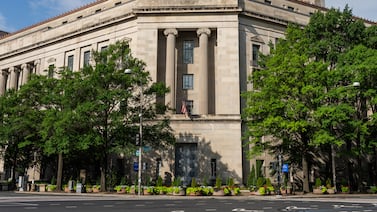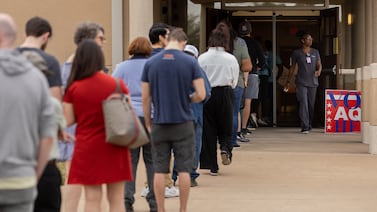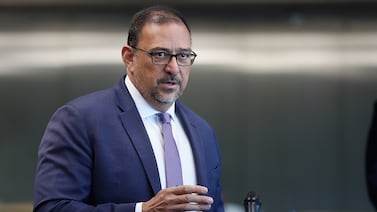Votebeat is a nonprofit news organization reporting on voting access and election administration across the U.S. Sign up for Votebeat Texas’ free newsletter here.
With Texas legislators locked in a standoff over Republicans’ push to redraw the state’s congressional districts mid-decade, time is running out for election officials to prepare for next year’s primary without major disruption.
Planning for the March primary election is already underway, but election officials say they can’t move forward without finalized maps — and the first key deadline, mandated by the state, is coming Sept. 9.
Democratic lawmakers have pledged to remain out of the state in protest of the Republicans’ proposed congressional map, making an agreement unlikely by the end of the special session Aug. 19. The proposed map could still change, and if Gov. Greg Abbott calls another special session, the debate could extend well into the fall.
Without knowing where the boundaries will be drawn, election officials won’t be able to finalize decisions about polling locations or the number of election workers needed. Voters whose polling location changes will also need to be informed, and candidates who want a spot on the primary ballot also need the new boundary lines well in advance in order to familiarize themselves with the district and campaign. Candidates have to be residents of the district they seek to represent.
In a typical redistricting cycle year, the process of adapting to new maps is labor-intensive for election officials and takes months.
“Who knows if we’ll have enough time?” said Chris Davis, the voter registration director in Travis County. He said the Sept. 9 deadline is when county precinct chairs — who represent their political party in a precinct within their neighborhood — can begin filing to run in the primary. A new map could shift precinct boundaries entirely.
Candidates “need to know now which precinct they’re filing for,” Davis said. “If we have to split a precinct into two, they may end up being the chair of a new precinct.”
All other primary candidates can begin filing for a spot on the ballot Nov. 8. The filing deadline is one month later.
Election officials across the state have for months been updating precinct boundary lines to account for population growth, as required by state law in odd-numbered years. But that work is now on hold due to the redistricting battle, multiple election officials told Votebeat. If and when new maps get approved, they’ll have to start over.
Redistricting delayed a past Texas election
The push to redraw Texas’ congressional maps outside the normal 10-year cycle follows a push by President Donald Trump’s advisers to help Republicans maintain control of the U.S. House in the 2026 midterms. Historically, the party in control loses seats in midterm elections, and Republicans currently have a slim majority.
The Republican-proposed map targets Democratic districts in the Austin, Dallas, and Houston metro areas as well as in South Texas.
Texas election administrators have faced redistricting-related election delays before.
In 2012, the Texas primary election was delayed until the summer due to months of disagreement and litigation over the state’s congressional maps. The date was changed twice, filing periods for candidates were pushed back, and campaigns were left in limbo without maps.
Election officials worry the same thing could happen now — and say they may lose access to polling locations and workers they’ve already secured for April and March if delays persist.
“We secure polling locations at least six months in advance,” said Jennifer Doinoff, Hays County election administrator. “We are making sure workers have enough time to plan for the dates of the election. If the dates change, those workers may not show up. The work for us is going to have to start all over again.”
Differing impact for vote centers vs. precinct-based polling sites
In some counties, it’s more urgent now to know the exact number of polling locations they’ll need.
Nearly 100 of Texas’ 254 counties use vote centers, which allow voters to cast their ballot anywhere in their county on Election Day. Vote centers reduce the number of locations officials have to staff and equip on Election Day.
The rest of the state’s counties assign voters to specific precincts. The number of precincts determines how many polling locations they’ll be required to have and whether they’ll need more workers. The new maps are key to figuring out that step of the process.
Denton County, in North Texas, has precinct-based voting, and must make sure voters know well ahead of Election Day which location they’re assigned to.
Frank Phillips, the county’s elections administrator, said he needs the final map soon to assess whether voters need to be reassigned or if more polling sites are required. Without that information, both voters and candidates will be in the dark about their districts — and what races will appear on their ballots.
“They may show up at the polls expecting to vote for District 33 and now they’re voting for District 26,” he said. “That’ll create confusion like something’s not right on their ballot.”
Phillips and other election officials are also watching key deadlines for sending absentee ballots to overseas and military voters, which has to be done more than a month ahead of the election. They must also program and test the voting equipment — a process that hinges on knowing which precincts and races are in play.
Natalia Contreras is a reporter for Votebeat in partnership with the Texas Tribune. Contact Natalia at ncontreras@votebeat.org.






